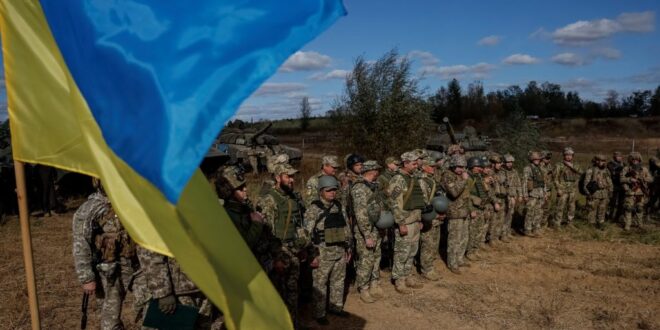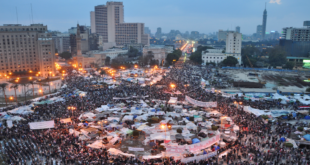The current fighting season is still far from over in Ukraine, but it is already clear that the war unleashed by Vladimir Putin in February 2022 will continue into the coming year. Developments on the Ukrainian battlefield in 2024 will likely depend on a number of factors including geopolitical considerations, election cycles, weapons deliveries, and the availability of ammunition.
So far, Ukraine has largely relied on the munitions stockpiles accumulated by partner countries prior to February 24, 2022. However, these supplies are not infinite and are already running low. “The bottom of the barrel is now visible,” noted NATO’s most senior military official, Admiral Rob Bauer, in early October.
Efforts are currently underway to improve the situation, with the US and European countries working to boost production of artillery shells and other munitions. Ukraine itself has also recently signalled its intention to dramatically increase domestic arms manufacturing by entering into a series of joint production agreements with international partners.
While there are signs of progress toward resolving Ukraine’s munitions supply issues, it will be many months before any major breakthroughs are achieved. Meanwhile, the intensity of artillery fire along the 850 kilometer front line of the war means that projected production is unlikely to meet Ukraine’s needs until the second half of 2024 or early 2025.
Shell shortages are nothing new for the Ukrainian military, which has been obliged to improvise repeatedly throughout the first twenty months of the war. One effective solution has been the increased use of FVP (first person view) kamikaze drones. We can expect to see many more drones deployed on the battlefield in 2024. Nevertheless, anticipated supply shortfalls in key munitions will likely shape Ukraine’s strategic thinking for next year’s spring and summer campaigning seasons.
Ukrainian military plans will also reflect geopolitical considerations. Many in Kyiv have watched with mounting alarm in recent months as the issue of continued US military aid to Ukraine has become caught up in domestic American politics. With the United States about to enter an election year, many Ukrainians are now fearful that further weapons deliveries from the United States could be delayed or otherwise disrupted.
The situation across the Atlantic looks somewhat more promising, with many of Ukraine’s European partners seemingly ready to increase arms shipments. Even so, uncertainty over weapons deliveries will weigh heavily on Ukraine’s military thinking and may lead to a higher degree of caution as commanders seek to conserve limited resources.
Another key factor that will determine the course of the war in 2024 will be Russia’s political priorities. The Kremlin may choose to remain on the defensive and focus on retaining currently occupied territories. Alternatively, Putin could order his commanders to resume large-scale offensive operations with a view to completing the occupation of the four Ukrainian provinces which were officially “annexed” by Russia in September 2022.
At present, a defensive strategy would appear to meet Russia’s main political objective, which is to freeze the conflict along the current front lines. The absence of any major Ukrainian breakthroughs during the country’s ongoing counteroffensive has already bolstered perceptions of a stalemate and led to growing international calls for a return to the negotiating table. If Russia can repeat this success in 2024, Ukraine will find it even more difficult to sustain international support for further large-scale offensive operations.
The recent Russian offensive around Avdiivka in eastern Ukraine is a reminder that Putin still has considerable unfulfilled territorial ambitions in Ukraine and may seek to seize new territory in the coming months. Purely defensive operations are unlikely to satisfy the Russian dictator, not least because he must orchestrate his “re-election” in 2024 and will therefore be eager to project strength. While the outcome of Russia’s scheduled presidential ballot is obviously a foregone conclusion, fresh battlefield victories would be particularly welcome as they would help distract domestic and international attention away from yet another rigged election.
While many military experts are highly skeptical regarding the offensive capabilities of Putin’s depleted military, Russian commanders do not appear to be constrained by any concerns over heavy losses. With this in mind, the sheer size of the Russian army and the overwhelming firepower advantages it continues to enjoy mean further advances cannot be ruled out.
The Kremlin’s army recruitment policies over the next few months will provide perhaps the best indication of Russia’s intentions for 2024. Any attempts to repeat the mass mobilization of late 2022 would signal plans to launch new offensive operations in the coming spring. Alternatively, if Moscow limits itself to more clandestine mobilization, this would suggest an emphasis on strategic defense.
In contrast to Ukraine, Russia is unlikely to face serious munitions shortages in 2024. Putin has already been working for more than a year to move much of the Russian economy onto a war footing. While this process has been far from perfect, it is producing results. Coupled with an unprecedented increase in military spending in Russia’s 2024 budget, this should ensure Putin’s troops have supplies for the coming year. However, the Russian military’s emphasis on massive artillery bombardments means even increased domestic production may not be enough to fully cover the army’s needs.
Ukraine’s slow progress against Russia’s heavily fortified defenses during the current counteroffensive could persuade Ukrainian commanders to opt for different tactics in 2024. Instead of relying on frontal assaults against Russian positions, Ukraine may seek to preserve its offensive capabilities while concentrating on attrition in order to erode Russia’s ability to wage war.
Any switch in emphasis toward attritional warfare would likely include a dramatically expanded list of targets in occupied Crimea and inside Russia itself. Much would depend on the anticipated arrival of F-16 fighter jets and deliveries of long-range cruise missiles. Kyiv would also look to build on its recent successes in the Black Sea, where a combination of Ukrainian air strikes and commando raids has forced Russia to withdraw much of its fleet from Crimea.
If Ukraine chooses to focus on attrition in 2024, this would create significant political risks for Kyiv. The Ukrainian military would be able to preserve troops and equipment for a major new push in 2025 once increases in Western arms production begin to materialize, but another year without any breakthroughs would also inevitably fuel international calls for some kind of compromise deal with the Kremlin.
Despite the absence of any meaningful changes to the front lines so far in 2023, efforts to portray the war as a stalemate are misleading. We are currently witnessing a period of intense attrition, but this may well be followed by a fresh round of maneuver warfare. At present, the key task for commanders on each side is to protect their own forces and inflict heavy losses on the enemy while preparing to exploit windows of opportunity, as Ukraine was able to do in September 2022.
Neither Ukraine nor Russia are currently ready to negotiate. Instead, both sides remain committed to a military resolution and are already looking ahead to the coming campaigns of 2024. Ukraine’s leaders know they must regain the momentum that has been lost during the current counteroffensive, while also maintaining the international support that has proven so crucial for the country’s war effort.
 Eurasia Press & News
Eurasia Press & News



